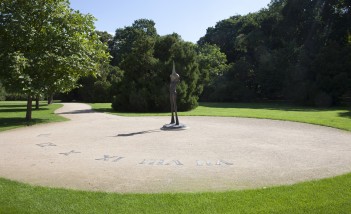
New Orangery
The building of the New Orangery (erected in 1860-1861) was designed by Adam Adolf Loewe and Józef Orłowski to shelter in cold weather the orange trees and exotic plants that were displayed in the garden in summer. Among the plants were the camphor tree, magnolias, myrtles, pomegranates and cypresses.
The plants blissfully enjoyed the light and warmth of the sun through the southern glass elevation. The middle section is decorated with two 19th century sculptures depicting Vertumnus and Pomona. They are a couple of mythological lovers - deities associated with the changing seasons, gardens and fruit trees. The two busts above them are symbolic of Autumn and Winter. The sculptures were made by Leon Molatyński.
Since the 17th century, orangeries have been a permanent feature of parks and gardens by royal and aristocratic residences across Europe. They can be found in Louvre, Versailles, the Kensington Palace or Kuskovo in Moscow. In Poland, they were also built in Wilanów, Radzyń Podlaski, Nieborów or Puławy.






